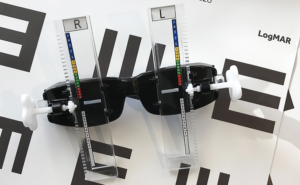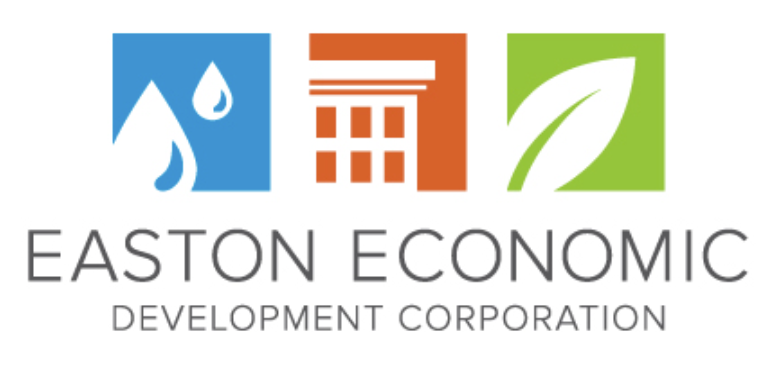Kevin White is the CEO and founder of Global Vision 2020, which delivers the USee Vision Kit, a simple and affordable eyeglass and vision care solution to developing countries worldwide. (A description of how the USee device works is explained following the interview.)
EEDC: How did this idea come about?
Kevin White (K.W.): In 2005, I was the director of humanitarian assistance programs for the DOD for Africa and Eastern Europe, which helped plan, budget, and organize medical outreach. I helped organize an Air Force unit that was going to Morocco, and one of the things they did was eyeglass distribution, giving away donated eyeglasses. But what was happening was that the people who needed vision correction were picking frames that looked good on them instead of the glasses they needed. As a professional logistician, I was taken aback at how inefficient the system was.
Here is the thing. When I was growing up, I needed glasses, and I am fortunate to live in a place where there is approximately one optometrist for every 8,000 people. In some of these developing countries, there may be one optometrist for every one million people. I figured there had to be a better way to solve this on a global scale, particularly since it is estimated that by 2050, half of the world’s children will be born in Africa. We need to ensure that they get a great education that allows them to become independent. That means that they need to be able to see the chalkboard or read a textbook. Ask anyone who needs glasses what it is like without them.
When I retired in 2009, I started working with these fluid-filled eyeglasses, which allowed patients to turn a dial and change their prescriptions. The benefit was that anyone could do it, but the glasses were expensive and not aesthetically pleasing; people were not wearing them. So that became my gap analysis. By 2013 I came up with a prototype and knew I was onto something.
EEDC: So, this device became part of the USee Vision Kit. What is in a kit?
K.W.: It depends on the kit size, but all of them come with the patented refraction/screening tool and color-coded lenses and frames. So for approximately $5.00, people get a pair of fashionable eyeglasses
EEDC: How did you even get to this point? Did you have to go through a lot of testing?
K.W.: Once I came up with the idea, the first thing I wanted to do was have a clinical trial. I happened to be getting my MBA at Johns Hopkins and was able to get an appointment with Dr. David Friedman from their Wilmer Eye Institute. He looks at my device and says, ‘if this works this simply, it’s going to change the world. What do you need?’ I told him I needed a clinical trial. And he said, ‘You got it.’ Usually, that would be another $100-300,000, but in this case, I didn’t have to come up with any additional money. Dr. Friedman ran a clinical trial and got it published. So no one can say it doesn’t work.
EEDC: I was wondering if you got pushback.
K.W.: Well, for instance, if I’m at an international APB (Agency for the Prevention of Blindness) conference that is attended by British, Australian, or U.S.-based optometrists, and they say, ‘no, no, only optometrists can give away eyeglasses, the data doesn’t support anything else. It’s unethical for you to do so.” I can come back with, ‘you are completely and utterly wrong. I’ve got Johns Hopkins behind this, published clinical trials, peer reviews, etc.’
If you have a solution that solves 92% of the problem, it is unethical not to implement that system.
EEDC: How many people do you estimate these kits have helped, and where are your customers from?
K.W.: Since 2018, we’ve helped about 200,000 people from Africa, Central America, and parts of South America
EEDC: You must have some great narratives about people being able to see clearly again (or for the first time). Any story stands out in your mind?
K.W.: Yeah, I met a child in Namibia who had been in second grade for a number of years. I asked the teacher how well he was seeing, and she said, ‘Seeing? Fine, like everybody else.’ But when we tested him, sure enough, he was something like 20/200. Before I give someone a pair of glasses, I’ll always take them outside and ask, ‘what do you see?’ And, they’ll tell me, and then I have them put on the glasses.
Now this village was at the bottom of this big hill with a river on the other side. So I asked, ‘What do you see?’ And he said, ‘I see the hill.’ I then gave him the glasses and asked again, ‘what do you see?’ And he started looking around with this amazed expression: is this what the world is supposed to look like? And he began to name what he was seeing as he looked up this hill: a rock, a bush, his friends, etc. Then he starts screaming, ‘I see the two trees, I see the two trees!’ I didn’t understand his excitement and turned to the principal with us. He explained that their town was known as the village with the two trees, but the kid had never seen the trees. It was a special moment for all of us. He was a great kid, and it was nice to see this transition for someone whose world was about to open up to infinite possibilities.
EEDC: Not everyone can say that they’ve changed so many lives. What is it like living with that knowledge?
K.W.: It’s great to have been able to reach 200,000, but that’s not even a drop in the bucket. You can’t forget that there’s this bigger number: 2.5 billion. That number is so big and so vast; I could never do all this myself. But I love hearing the stories and the experiences of people who have been changed by being able to see clearly. It warms my heart, and it feels great to get stories and photos about people whose lives have been impacted by a $5 pair of glasses.
EEDC: How are you getting the word out there?
I go to conventions, conferences, and places where decisions are made. I look for health conferences, ministers of health, and national health coordinators and ask them to check out the system and the device. Our number one customers are faith-based organizations supporting clinics, hospitals, schools, and everything else overseas. They go on medical missions, and I make sure to introduce the kit to them.
EEDC: You’ve received some prestigious awards for your invention.
K.W.: We have. It’s been a crazy ride. It helped when I won the million-dollar Creator Award from WeWork a couple of years ago. That money helped me get the funds I needed to go to injection molding as one of the processes and build and grow a supply chain.
We’ve won the International Design Excellence Award for Humanitarian Design (the iPhone once won it for Electronic Design). We were the winner of the Developing World Technology category in Fast Company’s 2020 World Changing Ideas Awards. One of the ones I’m most proud of is the Humanity Award we won in 2020 from the U.S. Patent and Trademark Office.
EEDC: How can people help?
K.W.: We are a 501c3, so we welcome donations to support the cost of administration, renting an office, internet, and travel expenses. Another way is for people to buy or sponsor a kit for a church that may have a medical mission program. Even getting the word to those churches: ‘Hey, you’re going to Peru next summer? Why don’t you take a USee backpack? It’s 500 bucks and has the screening materials and eighty pairs of glasses, everything you need to help 80 people.’
EEDC: Your headquarters are in Easton. Did you grow up on the Eastern Shore?
K.W.: No, I was an Air Force brat. I was born in Turkey, lived in the U.K., went to high school in Florida, joined the Navy, went to the Naval Academy, became a Marine, and lived all over the world. My wife is from St. Michaels. We returned from being stationed in Germany, and our kids were three and five when I realized I wanted my boys to have roots. My last tour of duty was in D.C., and I said, ‘Why don’t we live on Eastern Shore and just raise kids in this Mayberry-like town that Easton is?’ This is my community.
EEDC: And you can do everything you need from here?
K.W.: Yeah, the internet has been a massive help to run logistics. Our kits are made and manufactured in China. The Usee device is made in Ohio. I rent a small space at the old Black and Decker building, where I keep a small stock supply. For larger customers, we ship directly from China. And that’s the goal–to simplify that process. This is a relatively online business seamlessly, through globally managed and globally sourced stock.
https://gv2020.org

USee Refraction Tool contains slide-controlled vision lenses that allow trained volunteers to ‘dial’ through the lens bar until the patient clearly sees the eye chart. The color and number on the lens bar correspond to the lenses available in the kit, which are then snapped into the selected frames.
Know anyone interesting in Easton? We’d love to hear their story! Email

